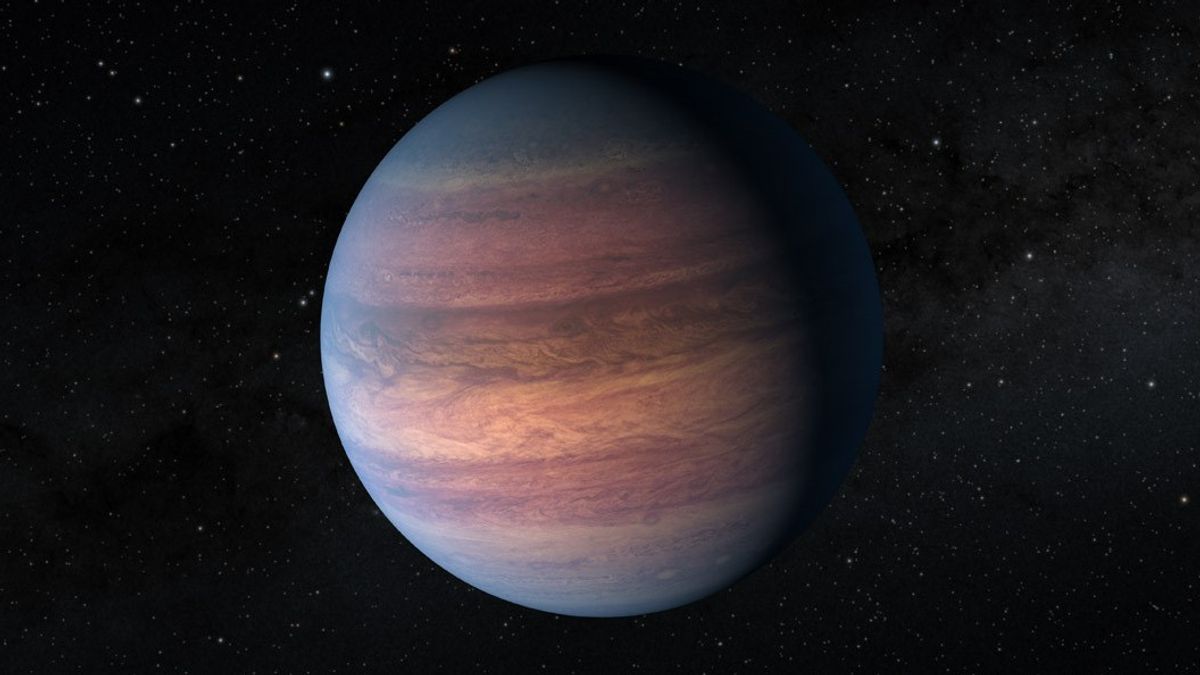JAKARTA - A scientist who is not from NASA has discovered a Jupiter-like exoplanet, about 379 light years from Earth, orbiting a star with the same mass as the Sun.
Is a former naval officer United States (US) from the state of Washington, Tom Jacobs. He found the gas giant planet from the Transiting Exoplanet Survey Satellite (TESS) data.
This finding is quite important according to NASA, because the planet, dubbed TOI-2180 b is quite unique, having 261 days a year longer than many other gas giants outside the Solar System.
In fact, it is almost three times as big as Jupiter, and denser. Possibly, TOI-2180 b has as much as 105 Earth masses of elements heavier than hydrogen and helium. In addition, with an average temperature of around 170 degrees Fahrenheit, the planet TOI-2180 b is warmer than Earth's.
Jacobs admits, the research, published in the Astronomical Journal, requires global unification efforts to track the planet.
"Finding and publishing TOI-2180 b is a large group effort that shows that professional astronomers and experienced citizen scientists can work together successfully. This is the best synergy," said Jacobs.
SEE ALSO:
So How Did Scientists Find Jupiter-Like Planets?
Using TESS data, scientists searched for changes in the brightness of nearby stars to help find new planets. Jacobs and residents at the Visual Survey Group examined the TESS data plots and using a program called LcTools, allowed them to examine the telescope data by eye.
On February 1, 2020, Jacobs looked at a plot showing the starlight of TOI-2180 dimming less than half a percent and then returning to its previous brightness level over a 24-hour period.
NASA explained that the incident may indicate the existence of an orbiting planet that is said to be transiting as it passes in front of the star. However, by measuring the dim light, scientists can estimate how big the planet is as well as its density.
The Visual Survey Group told Dalba and University of New Mexico assistant professor Diana Dragomir about the graph-like light curve that shows starlight over time.
"With this new discovery, we are also pushing the limits of the types of planets we can extract from TESS observations. TESS was not specifically designed to find exoplanets orbiting far away, but our team, with the help of citizen scientists, continued to unearth this rare gem," said Dragomir.
To find planets, scientists also use computer algorithms to identify multiple transit events from a single star. Manually, the Visual Survey Group finds a single transit event, but further observations are needed to ensure the find is valid.
Dalba used the Lick Observatory's Automatic Planetary Finder Telescope in California to measure stellar wobble as well as the Hawaiian Keck I telescope at the WM Keck Observatory.
Dalba also continues to hunt for a second transit event, none of the telescopes at 14 locations on three continents in August 2020 detected the planet, and that included 500 days of observations that allowed him and his colleagues to calculate the planet's mass and possible orbits.
"However, the lack of clear detection in this time period places a limit on how long the orbit is, suggesting a period of about 261 days. Using that forecast, they predict TESS will see the planet transit its star again in February 2022," NASA said.
Next month, Dalba and other citizen scientists will be looking for more signs of the planet. With the James Webb Space Telescope, the planet can be observed as well as its atmosphere in the future, as well as looking for the presence of small objects orbiting TOI-2180 b. Although about 4.800 exoplanets have been confirmed, it is estimated that there are billions in the galaxy.
The English, Chinese, Japanese, Arabic, and French versions are automatically generated by the AI. So there may still be inaccuracies in translating, please always see Indonesian as our main language. (system supported by DigitalSiber.id)
















